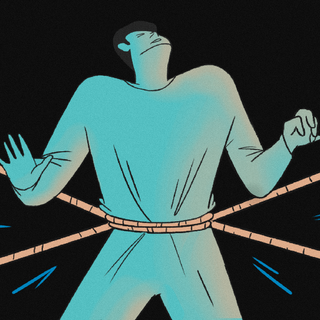Have you ever experienced hearing a loud, explosive noise — of thunder, gunshots, a bomb going off, a car backfiring, or a fire truck blaring past — just as you were beginning to doze off? If the sounds were imaginary — basically, they never existed or nobody other than yourself heard them — you may have experienced what is known as “exploding head syndrome,” or simply, EHS.
Interestingly, the explosive noises may also be accompanied by muscle twitches and flashes of light. But unlike what its name suggests — and despite how harrowing the experience sounds — EHS doesn’t actually cause people’s heads to explode. It’s a sleep disorder that is, in fact, it’s not even physically painful or life-threatening.
However, as one can possibly imagine, hearing sudden loud noises amid the silence of the night is a recipe for distress — naturally, then, it can induce panic or fear in people experiencing it. It disturbs their sleep, too, of course — forcing them to battle through fatigue during the day. As such, it can be a rather draining experience, leaving people with little energy to glide through the day.
The frequency of EHS episodes one experiences, though, can vary from person to person. Some people may have to deal with a swarm of episodes in one night while some experience them only once in a while; some others yet may deal with frequent episodes after a long, long period of inactivity. Past research suggests that among people with EHS, around 3-6% deal with at least one episode a month.
Related on The Swaddle:
What You Need To Know About Migraines
EHS belongs to a group of sleep disorders called “parasomnias,” or conditions that lead one to experience undesirable physical events that disrupt their sleep. Parasomnias are estimated to affect anywhere between 4 and 67% of humans. Some commonly known parasomnias we have all heard of, in some context or another, include night terrors, sleep-walking, sleep-eating, and sleep paralysis.
Among them, it is estimated that about 10% of the population has experienced EHS, at least, once in their lives. Some studies estimate the number to be greater — between 29-38%. Its exact prevalence, however, remains unknown — even though the condition has, reportedly, been documented since as early as the 1870s. It is known to be more common among the female population — and in older people as well. While people reporting it are mostly in their 50s, people below the age of 10 and over the age of 80 have also been known to experience EHS.
The cause of EHS still remains unknown. Some experts do, however, note that for many individuals, EHS episodes become more frequent when they’re stressed or tired — suggesting a possible link. Experts also believe EHS may result from “sudden shifts in parts of the middle ear,” perhaps, mimicking loud noises; they have also theorized that minor seizures in the brain may be behind EHS episodes. Scientists have not been able to establish a genetic link either when it comes to EHS. Basically, while we have a multitude of hypotheses, we don’t have a confirmed answer.
As the lack of research into EHS suggests, there’s no standard treatment option for the condition. Medical practitioners have noted improvements after treating people with migraine medication or antidepressants. But some experts suggest that it might not require medication at all — although that can, obviously, vary from person to person, depending on the frequency of episodes and the extent to which the disorder impacts their lives.




